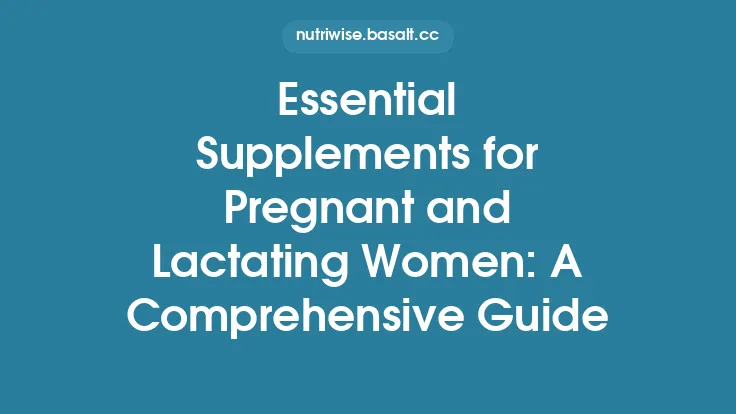Iron supplements are among the most commonly used over‑the‑counter (OTC) products, especially for individuals with iron‑deficiency anemia, heavy menstrual bleeding, or increased physiological demands such as pregnancy. At the same time, thyroid hormone replacement—most often levothyroxine (synthetic T4) but also liothyronine (synthetic T3) and natural desiccated thyroid extracts—remains a cornerstone therapy for hypothyroidism. When these two therapeutic categories are taken together, a well‑documented pharmacokinetic interaction can compromise the effectiveness of thyroid medication, leading to suboptimal symptom control and potentially confusing laboratory results. Understanding the underlying mechanisms, the practical steps to mitigate the interaction, and the clinical signs that suggest a problem is essential for patients, caregivers, and health‑care professionals alike.
Why Iron and Thyroid Medications Interact
Competitive Absorption in the Small Intestine
Both elemental iron and levothyroxine are absorbed primarily in the duodenum and proximal jejunum. Iron, especially in its ferrous (Fe²⁺) form, forms insoluble complexes with the anionic components of levothyroxine tablets (e.g., the sodium or potassium salts). These complexes are poorly absorbed, reducing the amount of active hormone that reaches the systemic circulation.
pH‑Dependent Solubility
Levothyroxine requires an acidic gastric environment for optimal dissolution. Iron salts, particularly ferrous sulfate, can raise gastric pH transiently by buffering the stomach acid. A higher pH diminishes levothyroxine solubility, further limiting its absorption.
Binding to Intestinal Transporters
The divalent metal transporter‑1 (DMT‑1) is a key carrier for ferrous iron across the enterocyte membrane. While levothyroxine does not use DMT‑1 directly, the presence of high concentrations of iron can saturate the transporter and alter the intestinal milieu, indirectly affecting levothyroxine uptake.
Clinical Consequences
- Elevated TSH: Reduced levothyroxine absorption leads to higher thyroid‑stimulating hormone (TSH) levels, often prompting unnecessary dose escalations.
- Persistent Hypothyroid Symptoms: Fatigue, weight gain, cold intolerance, and cognitive slowing may continue despite reported medication adherence.
- Misinterpretation of Lab Trends: Fluctuating TSH values can be misattributed to disease progression rather than a drug‑nutrient interaction.
Types of Iron Supplements and Their Relative Impact
| Formulation | Typical Elemental Iron (mg) | Absorption Rate | Interaction Potential |
|---|---|---|---|
| Ferrous sulfate | 65 | High | Strong |
| Ferrous gluconate | 35 | Moderate | Moderate |
| Ferrous fumarate | 106 | High | Strong |
| Iron polysaccharide complex (e.g., sucrosomial iron) | 30‑45 | Variable, often lower | Lower |
| Carbonyl iron | 45‑50 | Slow, controlled release | Moderate |
| Heme iron polypeptide | 12‑15 | High (heme pathway) | Minimal (different transport) |
The classic OTC preparations—ferrous sulfate, gluconate, and fumarate—are most likely to interfere with levothyroxine because they release a large amount of free ferrous ions in the proximal gut. Newer formulations that encapsulate iron or use the heme pathway tend to have a reduced interaction profile, though timing considerations remain prudent.
Practical Strategies to Prevent Interaction
Timing Is the Simplest Tool
- Separate Dosing by 4 hours: Take levothyroxine on an empty stomach (typically 30–60 minutes before breakfast) and schedule iron supplementation at least four hours later, or vice‑versa. This interval allows the majority of each agent to be absorbed before the other is introduced.
- Evening Iron Dosing: If morning separation is difficult, many patients find it convenient to take iron with dinner, provided levothyroxine is taken early in the morning.
Use of Food to Buffer Interaction (When Timing Is Not Feasible)
- Calcium‑Containing Foods: While calcium itself can impair levothyroxine absorption, a modest amount of food (e.g., a small piece of toast) taken with iron can reduce the formation of insoluble complexes. However, this approach should be used only when strict timing cannot be maintained, and the patient should still avoid high‑calcium meals within the same window as levothyroxine.
Selecting an Iron Formulation with Lower Interaction Potential
- Heme Iron Supplements: Because they use a different absorption pathway, heme iron products (e.g., heme iron polypeptide) are less likely to bind levothyroxine. They may be a good option for patients who struggle with strict dosing schedules.
- Iron Polysaccharide Complexes: These are designed to release iron more slowly, reducing the peak concentration of free iron in the duodenum and thus diminishing the chance of complex formation.
Monitoring Thyroid Function After Initiating Iron
- Baseline TSH: Obtain a TSH measurement before starting iron therapy.
- Follow‑Up at 6–8 weeks: Re‑check TSH after the new iron regimen has been in place for at least one month, as levothyroxine dose adjustments typically take 4–6 weeks to reflect in labs.
- Adjust Levothyroxine Dose Only After Confirmed Interaction: If TSH rises and the timing protocol is not being followed, first correct the dosing schedule before altering the thyroid medication dose.
Special Populations
Pregnant Women
Pregnancy increases iron requirements and often necessitates supplementation, while hypothyroidism is also more common. The stakes are higher because both iron deficiency and uncontrolled hypothyroidism can adversely affect fetal development. A strict 4‑hour separation is strongly recommended, and clinicians may favor low‑interaction iron formulations (e.g., heme iron) when possible.
Elderly Patients
Polypharmacy is frequent in older adults, and gastric acidity often declines with age, already compromising levothyroxine absorption. Adding iron can exacerbate this issue. Consider using a liquid levothyroxine formulation, which may be less sensitive to pH changes, and schedule iron dosing at bedtime.
Patients with Gastrointestinal Disorders
Conditions such as celiac disease, inflammatory bowel disease, or bariatric surgery can already impair nutrient absorption. In these cases, the interaction may be more pronounced, and therapeutic drug monitoring (TDM) of thyroid hormones becomes essential. A gastroenterology consult may be warranted to optimize both iron repletion and thyroid hormone delivery.
Patient Counseling Checklist
- Explain the Why: Patients are more adherent when they understand that iron can “steal” their thyroid medication.
- Provide a Simple Schedule: Example – “Take levothyroxine with a glass of water at 7 am, wait 30 minutes, then have breakfast. Take iron at 12 pm with lunch or at 8 pm after dinner.”
- Emphasize Consistency: Even small variations (e.g., taking levothyroxine with coffee) can affect absorption.
- Highlight Symptoms of Under‑Replacement: Fatigue, cold intolerance, constipation, weight gain.
- Encourage Lab Follow‑Up: Remind patients to keep their 6‑week post‑initiation thyroid test appointment.
- Discuss Side Effects of Iron: Constipation, dark stools, nausea—these can be mitigated by taking iron with a small amount of food, but never with the thyroid pill.
Frequently Asked Questions
Q: Can I take a multivitamin that contains iron together with my thyroid medication?
A: Yes, but treat the multivitamin as an iron source. Apply the same 4‑hour separation rule. Some multivitamins contain only trace iron; in those cases, the risk is lower, but timing is still advisable.
Q: Does the liquid form of levothyroxine avoid the interaction?
A: Liquid levothyroxine is less dependent on gastric acidity and may be less affected by iron‑induced pH changes, but the chelation issue remains. Separation timing is still recommended.
Q: What if I forget to separate the doses?
A: One occasional overlap is unlikely to cause lasting harm, but repeated co‑administration can lead to chronically elevated TSH. Reinforce the schedule and consider setting alarms.
Q: Are there any dietary sources of iron that I should avoid around my thyroid medication?
A: Whole foods high in iron (red meat, fortified cereals, legumes) can also affect absorption if consumed in large amounts within the same window. Aim for a balanced meal schedule that respects the 4‑hour rule.
Q: Could other supplements (e.g., calcium, zinc) further complicate the picture?
A: While calcium and zinc each have their own interactions with levothyroxine, this article focuses on iron. If you are taking multiple minerals, each should be spaced appropriately from the thyroid medication.
Summary of Key Takeaways
- Mechanism: Iron binds levothyroxine in the gut, forming insoluble complexes and raising gastric pH, both of which diminish hormone absorption.
- High‑Risk Forms: Ferrous sulfate, fumarate, and gluconate are the most likely to interfere; newer, slower‑release or heme‑based iron products pose less risk.
- Timing: A minimum 4‑hour gap between levothyroxine and iron supplementation is the most reliable strategy.
- Monitoring: Baseline and follow‑up TSH measurements are essential after any change in iron therapy.
- Patient Education: Clear, simple dosing schedules and symptom awareness empower patients to maintain therapeutic efficacy.
By integrating these evidence‑based practices into routine care, clinicians can safeguard thyroid hormone replacement while still addressing iron deficiency—a dual goal that promotes overall health and quality of life.





